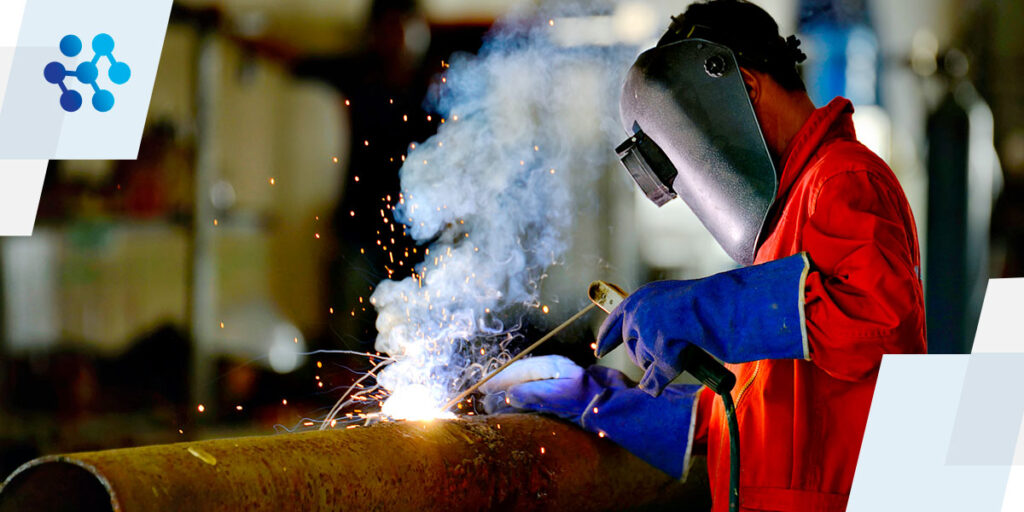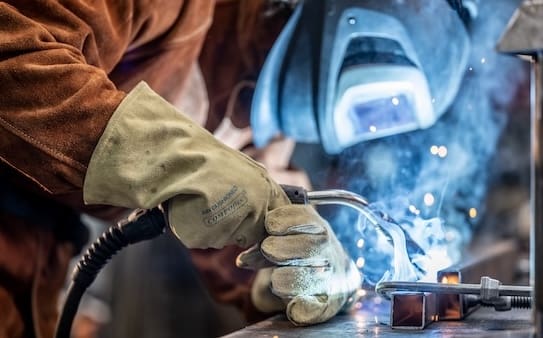Common Welding Repair Issues and How to Address Them Successfully
Welding repair work commonly come across a variety of problems that can endanger the honesty of the last product. Usual troubles consist of inadequate infiltration, porosity, and misalignment, to name a few. Each flaw offers special obstacles that need certain approaches for resolution. Understanding these concerns is vital for welders intending to improve their end results and skills. This discussion will check out these typical welding repair work concerns and efficient methods to address them.
Poor Penetration
Inadequate penetration happens when the weld metal falls short to completely fuse with the base material, causing weak joints and prospective structural failures. This problem usually comes from not enough warm input, incorrect electrode angle, or inappropriate welding rate. Welders might encounter insufficient penetration due to a miscalculation of the needed parameters for a certain product thickness or kind. Additionally, contamination on the base material's surface area can hinder reliable bonding, worsening the problem. To address inadequate penetration, welders must ensure proper settings on their tools and keep a tidy job surface. Normal evaluation of welds is recommended to determine any type of shortages early, permitting timely adjustments and the avoidance of compromised structural honesty in welded assemblies.
Porosity
Porosity is an usual issue in welded joints that manifests as little gas bubbles entraped within the weld metal. This defect can compromise the stability of the weld, causing minimized stamina and potential failing under stress and anxiety. Montana Mobile Welding and Repair Belgrade. Porosity commonly arises from contamination, moisture, or inappropriate welding methods, which permit gases to escape right into the liquified weld pool. To address porosity, welders need to assure correct surface area prep work, preserve a tidy workplace, and use ideal welding specifications. Additionally, choosing the best filler material and protecting gas can alleviate gas entrapment. Routine examination and screening of welds can aid identify porosity early, assuring timely rehabilitative activities are taken, consequently preserving the top quality and integrity of the welded framework
Misalignment
Misalignment in welding can develop from different factors, consisting of incorrect configuration and thermal development. Comprehending the root triggers is crucial for reliable resolution. A number of modification techniques are offered to realign components and ensure structural honesty.
Reasons of Misalignment
Welding imbalance commonly comes from a variety of underlying issues that can compromise architectural honesty. One primary cause is improper fit-up of elements prior to welding, which can result in gaps and unequal surfaces. Variants in thermal development during the welding process can additionally lead to distortion, especially if the materials being joined have various coefficients of development. Furthermore, poor fixturing and securing might stop working to hold components firmly in area, causing motion throughout welding. Improperly conserved tools, consisting of welding devices and tools, might introduce disparities in the weld grain, more adding to imbalance. Driver error, stemming from inadequate training or experience, can likewise play a substantial role in developing misaligned welds.
Modification Techniques Readily Available
Resolving imbalance properly needs a mix of restorative strategies customized to the specific issues available. One usual method is using fixtures or jigs to hold components in the proper position throughout welding, making sure consistent positioning. Additionally, preheating the products can help lower distortion and boost fit-up. For considerable imbalance, mechanical adjustment techniques, such as using hydraulic jacks or clamps, can be utilized to fix the setting before welding. Post-weld warm therapy may likewise be essential to soothe stress and anxieties triggered by imbalance. Careful evaluation and modification throughout the configuration stage can avoid imbalance issues from becoming considerable issues, promoting a smoother welding process and enhancing total structural integrity.
Distortion
Distortion is a typical obstacle in welding that can arise from different variables, including unequal cooling and heating. Comprehending the sources of distortion is necessary for executing reliable prevention methods. Resolving this problem not only boosts architectural stability yet likewise boosts the general high quality of the weld.
Reasons of Distortion
When based on the intense heat of welding, materials often go through changes that can cause distortion. This phenomenon mostly arises from thermal growth and tightening during the welding process. As the weld area warms up, the product increases; upon cooling, it contracts, which can create internal stress and anxieties. On top of that, irregular home heating throughout a workpiece can intensify these stress and anxieties, causing warping or bending. The type of product additionally plays a significant role; steels with differing thermal conductivity and coefficients of growth may react differently, resulting in uncertain distortions. Moreover, poor joint style and insufficient fixturing can add to imbalance during welding, increasing the likelihood of distortion. Understanding these reasons is necessary for efficient welding repair work and prevention approaches.
Avoidance Techniques
Effective avoidance techniques for distortion throughout welding focus on managing warm input and ensuring proper joint style. Maintaining a consistent warm input aids to minimize thermal expansion and contraction, which can result in distortion. Making use of techniques such as pre-heating the workpiece can also lower the temperature level slope, promoting consistent heating. Furthermore, picking ideal joint styles, such as T-joints or lap joints, can improve stability and decrease tension concentrations. Implementing correct fixturing to safeguard the work surfaces in place better help in maintaining placement throughout the welding process. Staggered welding sequences can distribute warm more uniformly, stopping localized distortion. By applying these methods, welders can significantly lower the possibility of distortion and improve the general high quality of their welds.
Fracturing
Splitting is a typical problem experienced in welding directory repair work, usually arising from different aspects such as inappropriate air conditioning rates, product selection, or insufficient joint preparation. The incident of splits can significantly jeopardize the stability of the weld, leading to prospective failings during operation. To resolve this issue, welders must first analyze the origin, guaranteeing that products work and appropriately picked for the details application. Additionally, managing the air conditioning price during the welding process is crucial; rapid cooling can induce tension and lead to cracking. Proper joint style and prep work additionally add to lessening the threat. Carrying out these techniques can improve weld quality and durability, ultimately minimizing the likelihood of breaking in completed weldments.

Insufficient Blend
A significant problem in welding repairs is incomplete combination, which happens when the weld metal does not properly bond with the base material or previous weld passes - Montana Mobile Welding and Repair Fabrication. This issue can cause weak points in the joint, potentially jeopardizing the integrity of the welded framework. Elements adding to insufficient blend consist of insufficient heat input, incorrect welding technique, and contamination of the surfaces being signed up with. To resolve this concern successfully, welders need to guarantee proper pre-weld cleansing and surface area prep work, along with readjust their welding specifications to achieve ample penetration and fusion. Routine evaluation during the welding process can additionally aid identify incomplete blend early, permitting prompt rehabilitative steps to enhance the overall top quality of the weld
Overheating
While welding repair services can improve architectural honesty, overheating provides a substantial difficulty that can lead to material degradation. Too much warm during welding can change the mechanical residential or commercial properties of steels, leading to reduced strength, increased check my site brittleness, and warping. This sensation is particularly vital in high-stress applications where architectural reliability is critical. Determining overheating can entail visual assessments for staining or distortion, along with checking temperature level during the welding procedure. To alleviate the dangers related to overheating, welders need to use appropriate techniques, such as managing warm input, changing traveling rate, and using ideal filler products. Furthermore, carrying out pre- and post-weld warm therapies can help bring back material residential or commercial properties and enhance the overall top quality of the repair work, making certain long-lasting efficiency and safety.
Frequently Asked Inquiries
What Are the Typical Indicators of a Welding Flaw?

Just How Can I Evaluate My Welds for High quality?
To evaluate welds for high quality, one can make use of visual inspections, ultrasonic screening, and radiographic approaches. Each strategy guarantees structural stability, determines problems, and confirms adherence to specified requirements, inevitably boosting the reliability of the welded joints.
What Safety and security Precautions Should I Take While Welding?
When welding, one should focus on safety and security by putting on ideal individual safety devices, making sure appropriate air flow, safeguarding flammable materials away, maintaining a clean work area, and being conscious of environments to stop injuries and accidents.
Can I Fix a Weld Without Redoing the Entire Joint?
Fixing a weld without renovating the whole joint is possible, depending upon the damage (Montana Mobile Welding and Repair Belgrade Fabrication). Methods such as grinding, including filler material, or making use of a welding process can successfully address details defects while maintaining the surrounding structure
What Tools Are Necessary for Reliable Welding Repairs?
Essential devices for reliable welding repairs consist of a welding device, wire brush, mill, protective gear, clamps, and filler products. Each tool plays an important role in ensuring high quality and safety during the fixing process. Porosity usually arises from contamination, dampness, or improper welding strategies, which allow gases to escape right into the molten weld pool. Improperly kept tools, including welding equipments and devices, might introduce variances in the weld grain, additional adding to imbalance. When subjected to the intense heat of welding, materials typically undertake changes that can lead to distortion. Cracking is a common problem run into in welding fixings, frequently resulting from various variables such as incorrect air conditioning prices, product option, or insufficient joint prep work. A substantial issue in welding repair work is incomplete blend, which takes place when the weld steel does not effectively bond with the try this out base material or previous weld passes.